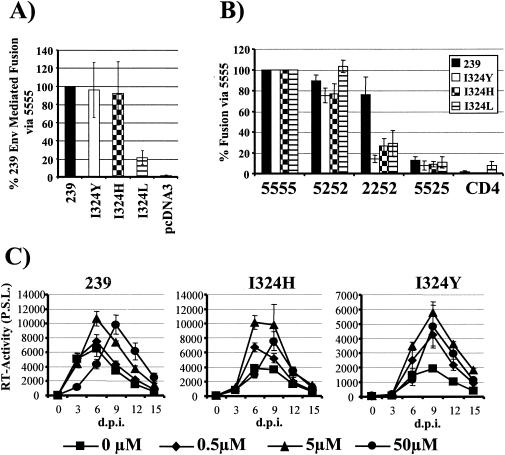FIG. 2.
Amino acid substitutions at position 324 modulate CCR5 engagement. (A) Usage of wt CCR5 for cell-cell fusion. Effector cells were transiently transfected with the indicated Env expression plasmids and infected with vaccinia virus encoding T7 polymerase. Target cells were transfected with rhesus macaque CD4, human CCR5, and an expression plasmid encoding luciferase under control of the T7 promoter. Effector and target cells were mixed, and luciferase production, indicating cell-cell fusion, was quantified. The average ± the standard error of the mean (SEM) of three independent experiments carried out in triplicates is shown. (B) Usage of CCR5/CCR2 chimeric receptors for cell-cell fusion. The fusion assay was carried out as described above; however, the indicated CCR5/CCR2 chimeras were used as coreceptors. The average ± the SEM of four independent experiments carried out in triplicates is presented. (C) Impact of CCR5 inhibition on replication in T cells. The macaque T-cell line 221-89 was incubated with the indicated concentrations of the small-molecule inhibitor TAK-779 and infected with 5 ng of either SIVmac239wt or the I324Y and I324H variants. Inhibitor was replenished during cultivation, and reverse transcriptase activity in the culture supernatants was assessed. The average ± the SEM of three experiments performed in parallel is indicated.

